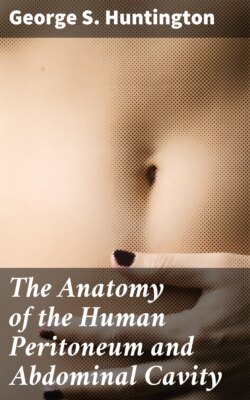Читать книгу The Anatomy of the Human Peritoneum and Abdominal Cavity - George S. Huntington - Страница 8
COMPARATIVE ANATOMY OF FOREGUT AND STOMACH.
ОглавлениеA serial review of this portion of the alimentary tract in vertebrates forms one of the most interesting and instructive chapters in comparative anatomy.
Fig. 47.—Gallus canis, dog-shark, ♂. Genito-urinary tract and cloaca in situ. The foregut has been divided just caudad of the communication with the oral cavity. (Columbia University Museum, No. 1694.)
Not only is every embryonal stage in the development of the higher mammalia represented permanently in the adult structure of some of the lower types, but the far-reaching influence of function and of the physiological demands on the structure of this portion of the digestive tract is strikingly illustrated by the numerous and marked modifications which are encountered.
The foregut, strictly speaking, is in mammals separated from the oral cavity by the musculo-membranous fold of the soft palate and uvula. In all other vertebrates except the crocodile, the oral cavity and foregut pass into each other without sharp demarcation (Fig. 47). In some of the lower vertebrates the alimentary canal never advances beyond the condition of a simple straight tube of nearly uniform caliber. There is no gastric dilatation and hence no differentiation of a stomach properly speaking. Such for example is the case in some teleost fishes, as the pickerel (Fig. 48). In these forms we have to deal with the persistence of the early embryonic pregastric stage of the higher types, before the simple alimentary tube is differentiated by the appearance of the distinct gastric dilatation.
In the Cyclostomata (Fig. 43) the intestinal canal passes through the body in a perfectly straight line and the three segments (mid-, fore- and hindgut) are not clearly differentiated.
In the Ammocœtes the foregut begins behind the wide branchial basket, dorsad of the heart, with a narrow entrance, which is succeeded by a dilated segment. The entrance of the hepatic duct separates fore- and midgut.
In Amphioxus the branchial pouch passes with a slight constriction directly into the gut which extends through the body-cavity in a straight line.
The narrow segment is usually regarded as the “œsophagus.” This is followed by a slightly dilated segment, the “stomach,” into which a blind pouch enters. This cæcal pouch is usually considered as a hepatic diverticulum (Fig. 49).
But even in these rudimentary forms the point where the liver develops from the entodermal intestinal tube marks the separation of fore- and midgut. The stomach, when it develops, is situated cephalad of the entrance of the hepatic duct into the intestine. The section cephalad of the duct opening may be very short, and the food digested further on in the intestinal tube. Consequently a function which in these lower vertebrates is assigned to the midgut becomes transferred in the higher forms to a specialized segment of the foregut, situated cephalad of the hepato-enteric duct. This segment is the . . .
| Fig. 48.—Alimentary canal of Belone, pickerel. (Nuhn.) | Fig. 49.—Amphioxus, dissected from the ventral side. The relatively enormous pharynx occupies more than half the length of the body. The walls are separated by the gill-clefts, and the parallel gill-bars abut at the midventral line on the endostyle. (Willey, after Rathke.) | Fig. 50.—Necturus maculatus, mud-puppy. Alimentary canal and appendages. (Columbia University Museum, No. 1454.) | Fig. 51.—Alimentary canal of Proteus anguineus. (Nuhn.) |
